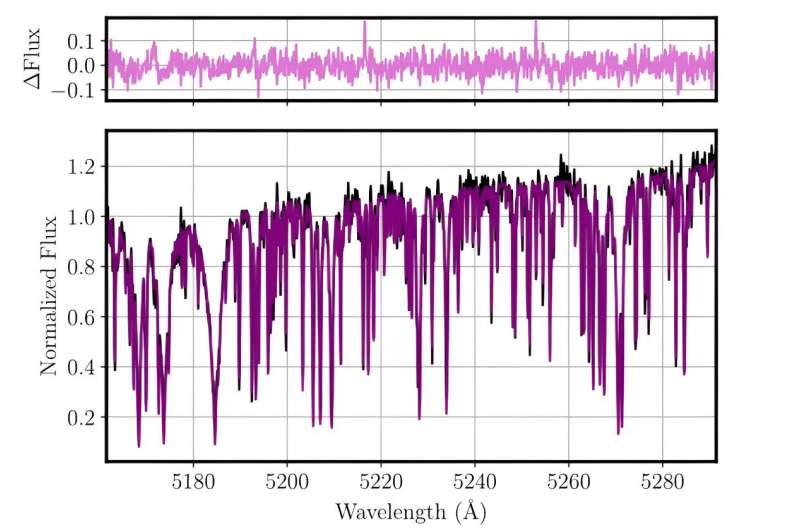May 30, 2024 report
This article has been reviewed according to Science X's editorial process and policies. Editors have highlighted the following attributes while ensuring the content's credibility:
fact-checked
preprint
trusted source
proofread
Astronomers explore the properties of a peculiar stellar stream

Using ESA's Gaia satellite and the MMT Observatory, astronomers have investigated a peculiar stream of stars in our galaxy named Theia 456. Results of the study, published May 21 on the pre-print server arXiv, deliver important insights into the properties and origin of this stellar stream.
Discovered in 2019, Theia 456 (also known as COIN-Gaia-13) is a stellar stream in the thin disk of the Milky Way, consisting of about 320 loosely bound stars. The stream extends nearly 400 light years in length and 20 degrees across the sky in the Northern Hemisphere.
Previous observations of Theia 456 have found that it is a kinematically, chemically, and gyrochronally coherent stellar stream. However, many properties of Theia 456 still remain uncertain and its dynamical history is not well understood.
That is why a team of astronomers led by Kyle Tregoning of the University of Florida decided to conduct follow-up observations of Theia 456 using Gaia and MMT's Hectochelle multi-object spectrograph.
"In this work, we combine Gaia astrometric quantities with MMT-Hectochelle-derived radial velocities to present a detailed dynamical history of Theia 456, a stellar stream located in the thin disk of the Milky Way," the researchers wrote.
Tregoning's team managed to produce a catalog of 321 stars in Theia 456—43 with full 6D phase space information and the remaining 278 with 5D Gaia astrometry. They found that, in general, the stream consists of about 2,100 stars contributing to a total mass of approximately 900 solar masses.
The observations found that Theia 456 formed as a low density open cluster and its kinematic age is estimated to be 245 million years. Initially, the cluster had a half-light radius of some 29 light years and a velocity dispersion of 0.14 km/s.
The acquired images show that Theia 456 has two distinct lobes, which can be indicative of a substructure at birth. However, the astronomers noted that other processes, such as interaction with a passing giant molecular cloud and the Milky Way's spiral arms, may be responsible for this.
Based on the collected data, the authors of the paper predict that Theia 456 will become more dispersed in the future so it will eventually be undetectable as a stellar structure of common origin. They assume that the stream will likely become undetectable for our current cluster finding methods in less than 100 million years.
"Within another ∼ 100 Myr, the extent of Theia 456 should roughly double in right ascension, making this structure unlikely to be identified by the current generation of clustering algorithms," the scientists concluded.
More information: Kyle R. Tregoning et al, Theia 456: Tidally Shredding an Open Cluster, arXiv (2024). DOI: 10.48550/arxiv.2405.13133
Journal information: arXiv
© 2024 Science X Network




















